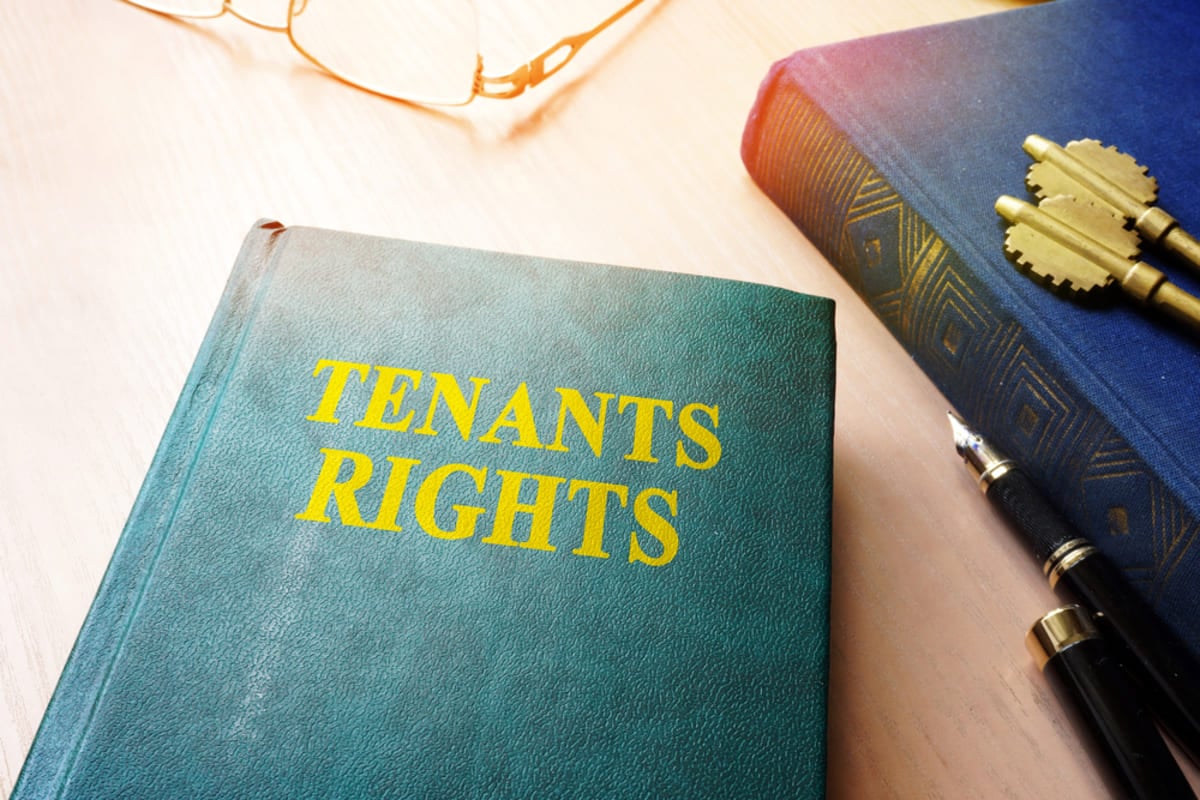Dealing with property damage is an inevitable part of being a landlord. Whether it's minor wear and tear or significant damage, landlords often find themselves in situations that require immediate attention and resolution.
This blog will help guide you through dealing with and preventing damage to your rental property management, ensuring that your investments remain profitable and your tenant relationships remain positive.
Keep reading to learn how to deal with tenant damage from our professionals at ES Property Management.
What Is Tenant Damage?
As a landlord, it's important to have a clear understanding of tenant damage and its implications for your residential rental property.
By familiarizing yourself with the types of damage and common causes, you can better address and prevent such issues in the future.
Types of Tenant Damage
Tenant damage can manifest in various forms, ranging from minor wear and tear to significant destruction.
Here are some common types of tenant damage:
-
Physical Damage: This includes broken windows, damaged doors, holes in walls, stained carpets, or scratched surfaces. Physical damage can occur due to accidents, negligence, or misuse of the property.
-
Appliance and Fixture Damage: Tenants may cause damage to appliances, such as ovens, refrigerators, or washing machines, by improper use or neglect. Fixtures such as light fixtures or plumbing fixtures may also suffer damage.
-
Structural Damage: Structural damage can result from removing load-bearing walls or making unauthorized alterations to the property. These modifications can compromise the integrity of the building.
-
Pest Infestations: Tenants may inadvertently introduce pests, such as rodents or insects, into the property. Failure to report or address pest issues can lead to further damage and potential health hazards.
Knowing the potential damages that can occur can help you be prepared for damages caused by tenants and resolve them quickly.
Common Causes of Tenant Damage
Understanding the common causes of tenant damage can help you address underlying issues and take preventive measures.
Here are some common causes of tenant damage:
-
Lack of Tenant Education: Inadequate knowledge about proper care and maintenance of the property can contribute to unintentional damage. Providing tenants with guidelines and resources on property care can help mitigate this issue.
-
Accidents and Mishaps: Accidental damage can occur due to unforeseen circumstances, such as spills, falls, or other mishaps. While accidents happen, tenants should be encouraged to report any damage.
-
Improper Maintenance: Failure to perform regular maintenance tasks, such as cleaning gutters or replacing air filters, can lead to property damage over time. Educating tenants on the importance of routine maintenance can help prevent related issues.
-
Tenant Negligence: Negligent behavior, such as smoking indoors, ignoring plumbing leaks, or failing to address pest infestations, can cause significant damage. Clear communication and regular inspections can help identify and address negligence.
These issues can cause a range of problems that landlords should be aware of and addressing them is integral for protecting the rental property.
 What to Do if Your Tenant Destroys Your Property
What to Do if Your Tenant Destroys Your Property
As a landlord, understand your responsibilities for your rental property management. By fulfilling these responsibilities, you can ensure a smooth and successful tenancy.
Here are three key responsibilities to keep in mind.
Conducting Regular Inspections
Regular inspections of your rental property help identify any potential issues or damages caused by tenants. By conducting inspections, you can catch problems early on and address them promptly. Inspections also provide an opportunity to assess the overall condition of the property and ensure that it is being well-maintained.
We recommend scheduling inspections at least once or twice a year — or as stated in your lease agreement.
During these inspections, thoroughly evaluate the property, including both the interior and exterior areas. Look for any signs of damage, such as broken appliances, holes in walls, or water leaks.
Be sure to take detailed notes and photographs as evidence, which will be useful in the event of disputes.
Documenting the Condition of the Property
Documenting the condition of your rental property before a tenant moves in is essential for protecting your investment. By thoroughly documenting the property's condition, including any existing damages or issues, you can avoid disputes and misunderstandings down the line.
Create a move-in checklist that outlines the condition of each room, including walls, floors, appliances, and fixtures. Take photographs or videos that capture the condition of the property.
Both you and the tenant should review and sign the move-in checklist, acknowledging the accuracy of the documented condition.
Additionally, consider utilizing a property management software or app to store and organize all property-related documents securely. This will help you easily access and refer to the documentation whenever necessary.
Setting Expectations in the Lease Agreement
One of the most effective ways to prevent tenant damage is by setting clear expectations in the lease agreement. The lease agreement should outline the tenant's responsibilities regarding property care and maintenance.
Include specific clauses in the lease agreement that address topics such as prohibited activities, pets, and repairs. Communicate your expectations regarding the tenant's responsibility to report any damages promptly and to seek approval before making any alterations or repairs. Emphasize the importance of routine maintenance tasks, such as changing air filters or cleaning gutters.
By setting expectations in the lease agreement, you establish a foundation for a successful and respectful landlord-tenant relationship.
Handling Tenant Damage
When you discover damage to your residential rental property caused by a tenant, take prompt and appropriate action to address the situation.
Here are the steps to effectively handle a situation where a tenant damages property.
Communicating with the Tenant
Open communication with the tenant is crucial when addressing damage to your property.
Reach out to the tenant to inform them about the damage and to discuss the necessary next steps. Maintain a professional and respectful tone during these conversations, focusing on finding a solution rather than placing blame.
Clearly explain the tenant's responsibilities regarding repairs and any potential financial implications. Document these communications for future reference.
Assessing the Damage
Before proceeding with any repairs or replacements, thoroughly assess the extent of the damage. Conduct a detailed inspection of the affected areas, taking note of the specific items or areas that require attention. Assessing the damage will help you determine the scope of the repairs needed and guide your decision-making process.
To ensure accurate documentation, consider taking photographs or videos of the damage as evidence. This can be useful in cases where you need to deduct the cost of repairs from the tenant's security deposit.
Repairing or Replacing Damaged Items
Once you have assessed the damage, you can proceed with the necessary repairs or replacements. Depending on the nature and severity of the damage, you may need to hire professionals or contractors to handle the repairs.
If the damage is minor and within your capabilities, you can choose to handle the repairs yourself, provided you possess the necessary skills.
When making repairs or replacements, prioritize quality and durability. Select materials and products suitable for the specific area or item being repaired. Keep in mind that the repairs should restore the property to its original condition, allowing it to be rented out again without any issues.
Ensure that you keep records of all expenses related to the repairs, including invoices, receipts, and labor costs. These records will be essential when deducting the cost of repairs from the tenant's security deposit.
If the cost of repairs exceeds the amount of the security deposit, the tenant is responsible for paying the remaining balance. Communicate this information to the tenant, providing a clear breakdown of the costs incurred and the shortfall.
If the tenant fails to pay the additional costs voluntarily, it may be necessary to resort to legal action to recover the funds.
How to Evict the Tenant, If Needed
In situations where the tenant damage is severe, repeated, or coupled with non-compliance to the lease agreement, eviction may become a necessary course of action. Eviction should always be the last resort and needs to be handled according to the law.
Here's how to navigate through it:
-
Review the Lease Agreement: Before starting the eviction process, review the lease to verify that the tenant has violated terms that justify eviction, such as habitual property damage or failure to perform necessary maintenance.
-
Issue a Formal Notice: If eviction is the only solution, the next step is to serve the tenant with a formal eviction notice. The notice should outline the reason for eviction and the time frame for the tenant to rectify the situation or vacate the property.
-
File for Eviction: If the tenant fails to respond to the eviction notice within the specified time, you can proceed to file an eviction lawsuit with your county court. Engage a lawyer to ensure you comply with all legal requirements.
-
Eviction Hearing and Judgement: The court will schedule an eviction hearing. If the judge rules in your favor, you'll receive a judgment of possession and an order of eviction, allowing you to legally regain control of your property.
-
Execution of Eviction: If the tenant still does not vacate the property, you can enlist your local sheriff or marshal to execute the eviction, ensuring that the tenant exits the property and you regain possession.
It's important to never attempt a 'self-help' eviction by changing locks or disconnecting utilities. Always follow legal channels to protect your rights and avoid potential legal complications.
How to Resolve Tenant Damage Issues in Court
There may be instances where the tenant denies responsibility for the damage, disputes the cost of repairs, or fails to agree to the deductions made from their security deposit. In such cases, you may have to escalate the matter to a small claims court to seek resolution.
Here's a step-by-step guide on how to proceed:
-
Gather Necessary Documentation: Before you file a lawsuit, ensure you have comprehensive documentation that supports your claim. This includes photographs or videos of the property before and after the damage, a record of all communications with the tenant regarding the issue, and receipts for repair costs.
-
Filing a Lawsuit: The next step is to file a suit in your local small claims court. Each jurisdiction has a specific procedure and documents required for this. You may need to pay a small fee to initiate the process.
-
Serving the Tenant: Once you've filed the suit, the court will provide you with a date for the hearing. You will then need to serve the tenant with a copy of the lawsuit and the court date.
-
The Court Hearing: During the hearing, you and the tenant will have the opportunity to present your case. Present your evidence in a clear, concise manner, and be prepared to answer any questions the judge may have.
-
Enforcing the Judgment: If the judge rules in your favor, the tenant will be ordered to pay the cost of repairs. If the tenant does not comply, you may need to take additional legal steps to enforce the judgment.
It's always best to try and resolve disputes with tenants amicably before resorting to legal action. Going to court should be your last resort, as the process can be time-consuming and costly.
Dealing with Security Deposits
When handling tenant damage, security deposits play a role in protecting the landlord's investment. Understanding the laws surrounding security deposits, deducting damages from the deposit, and providing itemized statements to tenants is essential for landlords.
Understanding Security Deposit Laws
Before exploring the specifics of deducting damages from a security deposit, landlords need to familiarize themselves with the security deposit laws in their jurisdiction.
These laws vary by location and typically outline the maximum amount that can be collected as a security deposit, the timeframe for returning the deposit, and the process for handling deductions.
In Indiana, landlords are legally obligated to return the full security deposit or provide a written notice if the full deposit will not be returned within 45 days of the lease agreement being terminated. If the landlord chooses to withhold part or all of the deposit, they must deliver an itemized list of damages, with descriptions and the corresponding repair costs.
There are no statutory limits on the amount a landlord can require for a security deposit in Indiana. This means that a landlord has the discretion to charge what they deem fair and reasonable, taking into consideration factors such as the condition of the property, the rental market, and the risk profile of the tenant.
However, it's important to note that excessive security deposits could deter potential tenants, and may even be viewed as discriminatory or predatory under certain circumstances.
Deducting Damages from the Security Deposit
When tenant damage occurs, landlords may be entitled to deduct the cost of repairs or replacements from the tenant's security deposit. However, deductions must be made by the applicable laws and regulations.
To deduct damages, landlords typically follow a systematic process.
First, they conduct a thorough assessment of the damage, documenting the extent of the harm caused by the tenant. It is crucial to provide evidence of the damage through photographs, written descriptions, and any relevant receipts or invoices.
Once the assessment is complete, landlords can proceed with deducting the necessary amount from the security deposit. Deductions may include repair costs, replacement costs, or any other expenses directly related to the tenant's damage.
It is important to ensure that the deductions are reasonable and supported by evidence.
Providing Itemized Statements to Tenants
After deducting damages from the security deposit, landlords are generally required to provide itemized statements to tenants. These statements outline the deductions made and provide a breakdown of the expenses incurred.
Itemized statements help ensure transparency and accountability in the handling of security deposits.
The itemized statement should include details such as the nature of the damage, the cost of repairs or replacements, and any other relevant expenses.
By providing a clear and detailed breakdown, landlords can demonstrate that the deductions were reasonable and necessary. This helps maintain a positive landlord-tenant relationship and reduces the risk of disputes.
 How Can Property Owners Prevent Tenant Damage?
How Can Property Owners Prevent Tenant Damage?
Preventing tenant damage can help operate successful rental properties. By taking proactive measures, you can minimize the risk of potential damage and protect your investment.
Here are three key strategies to consider.
1. Screening Tenants
Screening tenants thoroughly is the first line of defense against potential damage to your rental property. You can gain valuable insights into a prospective tenant's reliability and responsibility by conducting comprehensive background checks, verifying employment and income, and checking references.
During the screening process, assess the applicant's rental history, including any previous instances of property damage or lease violations.
Additionally, consider obtaining a credit report to evaluate their financial stability and ability to meet their obligations. Taking the time to select responsible tenants can significantly reduce the likelihood of future damage to your property.
2. Regular Property Maintenance
Regular property maintenance plays a role in preventing tenant damage. By conducting routine inspections and addressing maintenance issues promptly, you can identify potential problems before they escalate into major issues.
Establish a maintenance schedule that includes regular inspections of the property, both internally and externally.
3. Educating Tenants on Proper Care and Maintenance
Educating your tenants on proper care and maintenance is crucial for preventing unintentional damage to your rental property.
Provide clear guidelines and instructions on how to use appliances, fixtures, and other amenities correctly. Emphasize the importance of reporting maintenance issues promptly to prevent them from worsening.
Consider providing tenants with a detailed tenant manual or welcome packet that outlines their responsibilities regarding property care and maintenance. This document should cover topics such as cleaning procedures, garbage disposal guidelines, and appropriate behavior to avoid damage.
Tenant Damaged Property? We’re Here to Help
Managing residential rental properties involves a balance of setting clear expectations, performing routine maintenance, and handling any tenant damage appropriately. The key to successful property management lies in taking proactive measures to prevent damage and maintaining open communication with tenants.
By conducting thorough tenant screenings, keeping the property in good repair, and educating tenants about their responsibilities, landlords can significantly reduce the risk of tenant-caused damage.
At ES Property Management, we understand the challenges that come with rental property management. That's why we offer comprehensive solutions designed to alleviate these stresses, allowing you to enjoy the returns of your investment without the headaches. Our highly skilled team conducts thorough tenant screenings to ensure only reliable, responsible individuals occupy your property.
Download the Protecting Your Investment Property Guide to learn how to protect your investment property!














